Table of Contents
Introduction Valley Of Flowers
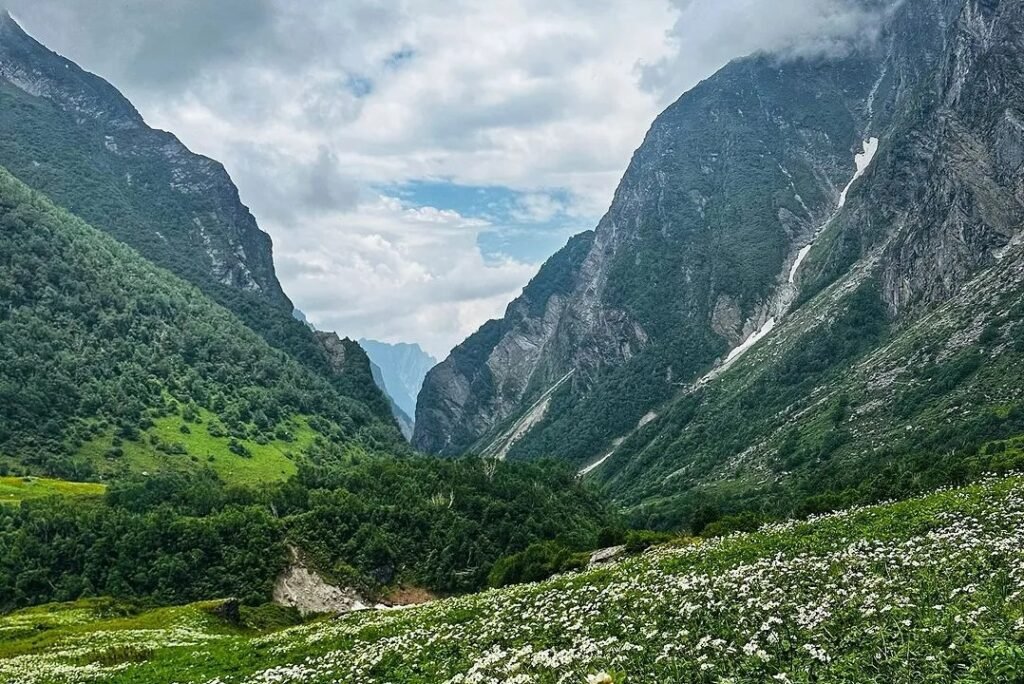
The Valley of Flowers, nestled within the Nanda Devi Biosphere Reserve in Uttarakhand, India, stands as a testament to nature’s splendor. Recognized as a UNESCO World Heritage Site, this remarkable valley enchants visitors with its breathtaking landscapes, vibrant meadows, and diverse flora. The trek through the valley, particularly between June and September, reveals a riot of colors as a vast array of flowers bloom, providing a mesmerizing spectacle that draws nature enthusiasts and trekkers from all corners of the globe.
The region is home to an impressive variety of plant species, making it a hotspot for biodiversity. Among these are several rare and endangered species, which add to the ecological significance of the valley. Travelers who make the journey find themselves surrounded not only by eye-catching vistas but also by the serene ambiance of the Himalayas, creating an unforgettable experience. The blend of adventure and tranquility in this UNESCO-listed site offers a unique opportunity for trekkers and explorers alike to immerse themselves in nature.
For those contemplating a visit, understanding how to reach the Valley of Flowers from Delhi is crucial. The journey involves multiple stages, combining various modes of transportation, from trains and buses to treks through picturesque landscapes. Each step brings adventurers closer to the heart of this floral paradise. Planning and preparation are key to ensuring a smooth journey, allowing one to fully appreciate the changing scenery and rich biodiversity en route. In light of this, readers are encouraged to embark on this enthralling journey and experience the Valley of Flowers, ensuring memories that will last a lifetime.
Getting to Haridwar/Rishikesh
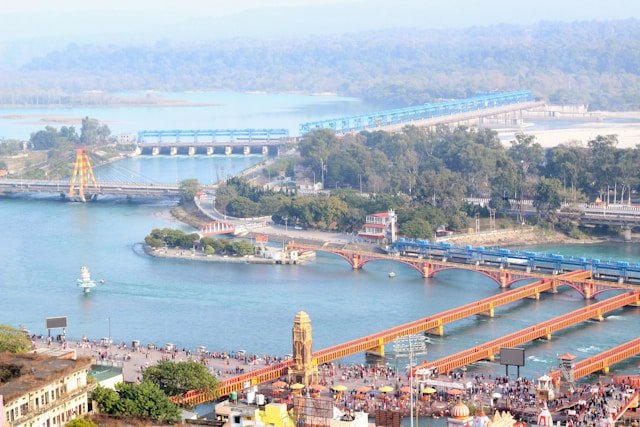
how to reach valley of flowers from delhi to Haridwar or Rishikesh presents several transportation options for travelers seeking to begin their journey to the stunning Valley of Flowers in Uttarakhand. Whether you choose to travel by train, bus, or taxi, each mode offers its own unique benefits, and understanding these can enhance your experience.
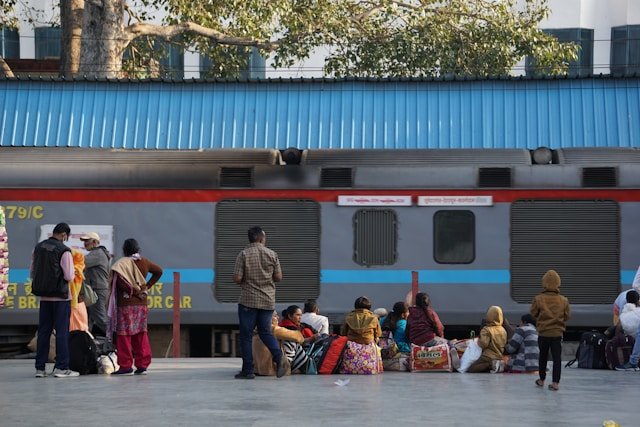
One of the most popular and convenient methods to reach Haridwar or Rishikesh is by train. Indian Railways operates a number of daily trains from Delhi to Haridwar, with journey times ranging from 5 to 7 hours. Trains such as the Shatabdi Express and the Uttarakhand Express provide comfortable travel alternatives. It is imperative to check the train schedules online and book your tickets in advance, especially during peak seasons when demand is high.
For those preferring bus services, numerous state-run and private operators provide regular bus services linking Delhi with Haridwar and Rishikesh. Buses depart from various locations in Delhi, including the ISBT Kashmiri Gate. Tickets typically start at a reasonable fare and can be booked at bus stations or online. While buses offer a budget-friendly option, the journey can take between 6 to 8 hours, depending on traffic conditions.
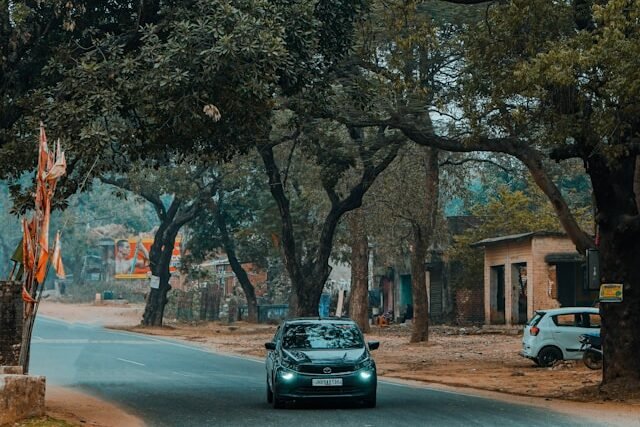
Alternatively, hiring a taxi or booking a private cab offers flexibility in departure times and stops along the way, which can be particularly advantageous for families or groups. Taxi fares can vary, so it is recommended to compare prices from different service providers. Although this option may be more expensive than public transport, it offers a more personalized travel experience. Regardless of your choice, always consider booking in advance to secure the best rates and availability during peak travel seasons.
Journey from Haridwar/Rishikesh to Govindghat
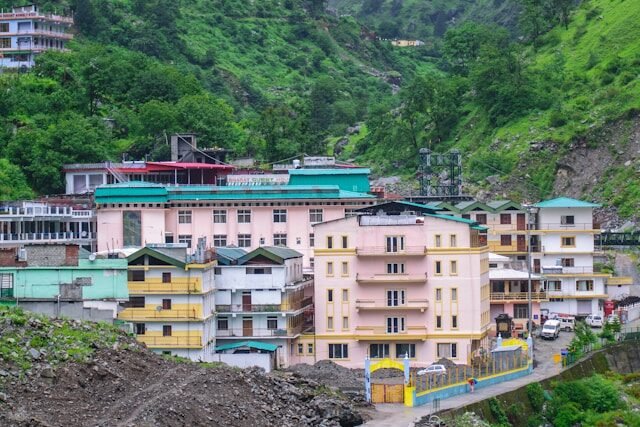
The journey from Haridwar or Rishikesh to Govindghat is a critical leg in reaching the breathtaking Valley of Flowers in Uttarakhand. This trip covers approximately 300 kilometers and typically takes around 10 to 12 hours, depending on road conditions and the mode of transportation chosen. Starting early in the morning is advisable, as this allows travelers to navigate the potentially hazardous roads during daylight hours, significantly enhancing safety and comfort.
There are three primary transportation methods for this journey: private taxis, buses, and shared jeeps. Each option has its own set of advantages. Private taxis offer the convenience of a flexible schedule, allowing travelers to take breaks and enjoy scenic views without the pressure of adhering to a fixed timetable. While this option tends to be more expensive, it provides comfort and a direct journey to Govindghat, which is essential for travelers who prefer a more personalized experience.
Buses are another affordable choice and can be boarded from Haridwar or Rishikesh. State-run buses provide an economical way to reach Govindghat, but they operate on fixed schedules, which may lead to extended wait times. It is recommended to book tickets in advance during peak travel seasons to ensure availability. Shared jeeps serve as a middle ground between the bus and private taxi options, allowing travelers to share costs while enjoying a faster ride than traditional buses.
Regardless of the mode of transportation chosen, it’s important to be prepared for the mountainous terrain. The roads can be narrow and winding, with occasional landslides and other hazards. Therefore, staying informed about the weather and road conditions prior to departure is crucial. This awareness not only enhances safety but also enriches the overall travel experience, ensuring one can fully appreciate the journey towards the Valley of Flowers.
Trekking from Govindghat to Ghangaria
The trek from Govindghat to Ghangaria is an essential part of the journey for those exploring how to reach Valley of Flowers Uttarakhand from Delhi. This approximately 13-kilometer trail is famous for its breathtaking scenery and the chance to experience a diverse range of flora and fauna. The trek generally takes about 6 to 7 hours to complete, depending on your pace and the number of breaks taken along the way.
The terrain is a mix of well-defined paths and steep inclines, with sections that can be challenging for some trekkers. However, the stunning views of the surrounding mountains, the sound of cascading rivers, and the vibrant greenery make the trek worthwhile. As you navigate this route, you may find picturesque waterfalls and lesser-known trails that add to the charm of the journey.
For those who may not be comfortable with the long ascent, there are options to hire ponies or mules at Govindghat, which can help alleviate the physical burden of the trek. These animals are well-trained and accustomed to the terrain, providing a reliable means of transportation. Additionally, it is possible to avail of porters who can carry your belongings, ensuring that you can focus on enjoying the views without the strain of heavy backpacks.
While trekking, be sure to take your time to absorb the natural beauty around you. The vibrant flowers, rich biodiversity, and breathtaking panoramas are a testament to the remarkable ecosystem found in this part of Uttarakhand. As you walk, observe the changing landscape and witness the beauty that awaits those eager to reach Ghangaria as a gateway to the Valley of Flowers.
Entering the Valley of Flowers
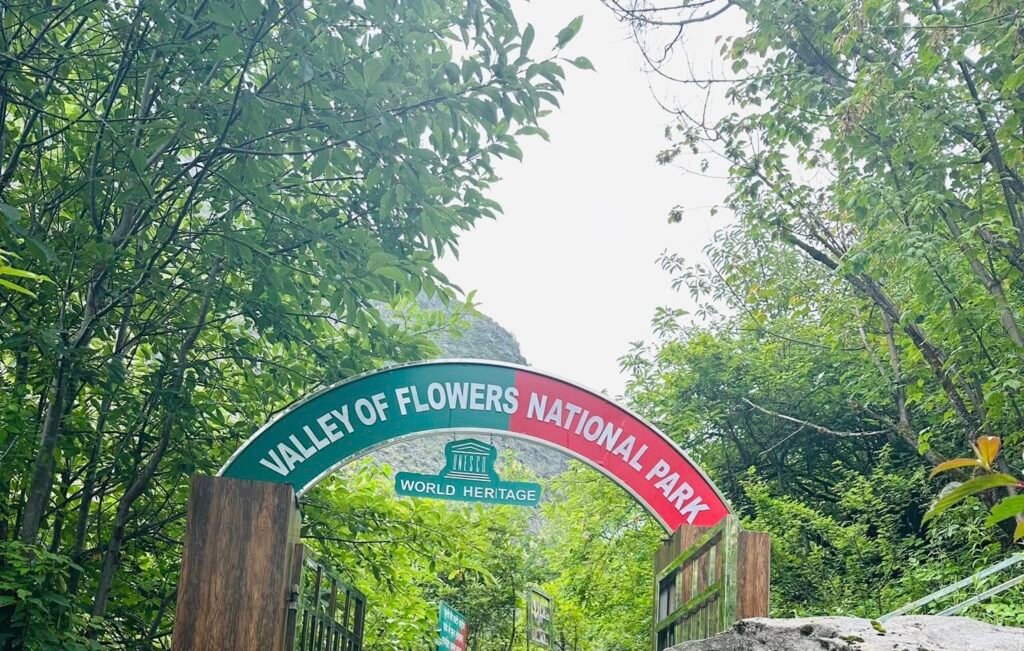
The final leg of the journey to experience the breathtaking Valley of Flowers from Ghangaria involves a scenic trek that is both invigorating and rewarding. Covering a distance of approximately 3 to 4 kilometers, this trek is the gateway to one of India’s most stunning natural wonders. The trail leading from Ghangaria to the Valley is well-marked and meanders through diverse landscapes, offering trekkers glimpses of the rich flora and fauna that characterize this UNESCO World Heritage site.
Before embarking on this trek, it is vital to obtain a permit, as entry to the Valley of Flowers requires official authorization to protect its delicate ecosystem. These permits can typically be obtained from the entry point at Ghangaria, where authorities ensure that trekking activities are managed sustainably. It is advisable to carry the permit with you throughout your trek, as it will be checked by park officials during your excursion.
The trek itself is relatively moderate in difficulty, making it accessible to most visitors, although proper trekking gear and physical preparedness are recommended. As you hike towards the Valley, expect to encounter majestic vistas of snow-capped mountains, vibrant green meadows, and an array of wildflowers that come alive during the blooming season from late June to early September. This natural spectacle is complemented by the soothing sound of nearby streams and the crisp mountain air, enhancing the overall experience.
Upon entering the Valley of Flowers, visitors are greeted by unparalleled beauty. The landscape transforms into a colorful tapestry, where countless species of flowers bloom in a riot of colors, attracting not only nature enthusiasts but also photographers and wildlife lovers. Overall, the journey from Ghangaria to the Valley of Flowers is not just a trek; it is an exploration of one of nature’s most exquisite showcases, serving as a fitting reward for those who have traveled from Delhi to reach this magical destination.
Alternative Travel Options
How to reach Valley of Flowers from Delhi can be accomplished through various means, including air and rail options. Choosing the most suitable alternative travel option depends on your preferences for comfort and convenience.
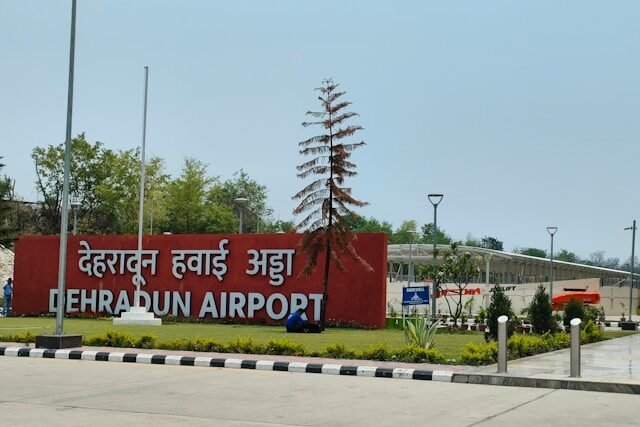
For those considering air travel, the nearest airport to the Valley of Flowers is the Jolly Grant Airport in Dehradun. This airport is well-connected to major cities across India, including Delhi. Once you arrive at Jolly Grant Airport, you can opt for a taxi or a pre-arranged transfer to reach your next destination. The distance from the airport to Govindghat, which serves as the starting point for trekking to the Valley of Flowers, is approximately 300 kilometers. Travel by road from the airport typically takes around 8 to 10 hours, depending on traffic conditions and weather.
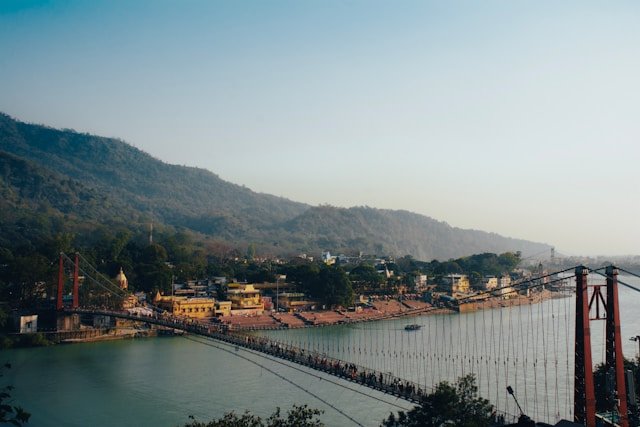
Alternatively, traveling by rail is another viable option. The closest railway station to the Valley of Flowers is Rishikesh, which is accessible through various trains from New Delhi. The journey by train provides a scenic view of the countryside and the opportunity to experience local culture. After reaching Rishikesh, you can hire a taxi or take a bus to proceed to Govindghat. The distance from Rishikesh to Govindghat is around 280 kilometers, and the journey could take around 7 to 9 hours by road.
Both travel options provide flexibility and the chance to enjoy the picturesque landscape of Uttarakhand. Whether you choose to fly or travel by train, ensure you plan your journey in advance, considering factors such as accommodation, weather conditions, and local travel schedules. Each alternative travel option presents a unique experience as you embark on the adventure of reaching the breathtaking Valley of Flowers.
Key Route Summary
Traveling from Delhi to the captivating Valley of Flowers in Uttarakhand is an adventure that involves several modes of transportation. The journey typically begins with a train or flight to Haridwar or Dehradun, both of which serve as convenient gateways to the region. The distance from Delhi to Haridwar is approximately 230 kilometers, which can be covered by train in 5 to 6 hours or by car in about 7 to 8 hours, depending on traffic conditions.
Upon arrival in Haridwar, travelers should opt for a bus or private taxi to reach Joshimath, which is roughly 270 kilometers away. This segment usually requires a travel time of 9 to 10 hours, given the hilly terrain and the winding roads. The journey to Joshimath is a scenic one, with picturesque views of the mountains and valleys. It is advisable to start early in the morning to ensure adequate daylight for safe travel along these routes.
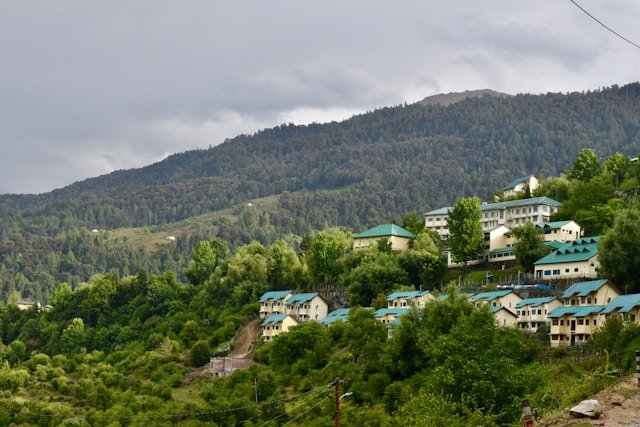
From Joshimath, the final leg towards the Valley of Flowers commences. The next step involves a short drive to Govindghat, about 20 kilometers away. This drive typically takes around 30 minutes. Once in Govindghat, travelers must embark on a 14-kilometer trek to reach the Valley of Flowers. This trek generally takes about 5 to 6 hours and is characterized by stunning landscapes filled with diverse flora and fauna, making it a highlight of the overall journey.
In total, the distance from Delhi to the Valley of Flowers encompasses approximately 540 kilometers, factoring in all segments of travel, with an overall journey time that can extend to 24 hours or more, depending on connections and trekking pace. By following these transportation methods sensibly, one can experience the breathtaking beauty of this UNESCO World Heritage site efficiently.
Travel Tips for a Smooth Journey

When planning how to reach Valley of Flowers Uttarakhand from Delhi, several essential travel tips can enhance your journey. First, timing your trip is crucial. The ideal season to visit the Valley of Flowers is during the monsoon, from late June to early September. While the rain nourishes the lush landscapes, it is advisable to check weather forecasts frequently as heavy rains can affect accessibility. Aim for a visit during the initial weeks of August when the blossoms are typically at their peak.
Road conditions can vary, particularly during the monsoon season, so be prepared for potential delays. The journey usually starts with a drive from Delhi to Rishikesh, followed by a trek to Joshimath, and then to Govindghat. Opt for a reliable vehicle and check local advisories regarding road conditions. Hiring a local driver who is familiar with the terrain can often provide an advantage, as they are well-versed in navigating the tricky paths and can provide valuable insights along the way.
Accommodations in and around the Valley of Flowers can be limited. Therefore, it is wise to book your stay in advance to avoid last-minute hassles. Options range from guesthouses to campsites, depending on your comfort level and budget. Staying a night in Ghangaria, the last village before the valley, can facilitate an early morning trek when the flowers are fresh and the trails less crowded.
Weather during the monsoon can be unpredictable. Be prepared for wet conditions by packing lightweight waterproof clothing, sturdy shoes, and quick-dry gear. Ensure you carry a first-aid kit, basic trekking essentials, and sufficient water. By following these travel tips, you will be well-equipped for your expedition to the stunning Valley of Flowers, ensuring a memorable experience from Delhi to this UNESCO World Heritage Site.
Deatils Reach Valley OF Flowers
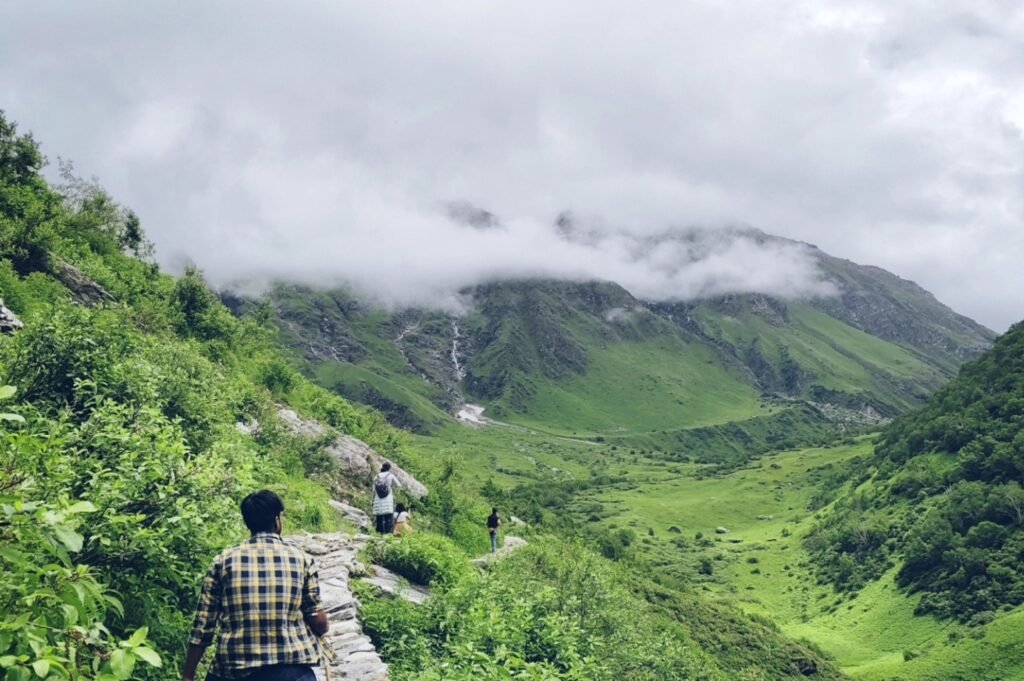
How to reach Valley of Flowers from Delhi is not just a journey but an adventurous experience that unveils the natural beauty of Uttarakhand. Having outlined the necessary steps—from planning your travel itinerary and choosing the right mode of transport to exploring the mesmerizing landscapes—those who follow this guide will find their efforts richly rewarded. The pristine meadows filled with vibrant flora, the majestic snow-capped peaks, and the serenity of the surroundings create an unforgettable picturesque setting.
By considering the various travel options available, such as train, bus, or car, you can select the most suitable method to embark on your adventure. Each route offers a unique experience, with breathtaking views that serve as prelude to the valley itself. The opportunity to connect with nature, witness the diverse biodiversity, and soak in the tranquility of the Valley of Flowers is truly a treasure.
As you set out on this journey from Delhi, ensure that you are well-prepared for the varying weather conditions and challenging terrains you may encounter along the way. This preparation will not only enhance your travel experience but also allow you to fully appreciate the beauty and significance of the valley. Engaging in this venture brings a rewarding sense of accomplishment and joy, making the trek to the Valley of Flowers one of the most memorable trips you can undertake. So, lace up your hiking boots, pack your essentials, and get ready to witness this enchanting destination. Exploring how to reach Valley of Flowers from Delhi is the first step towards creating lasting memories in one of nature’s finest creations.





Leave a Reply